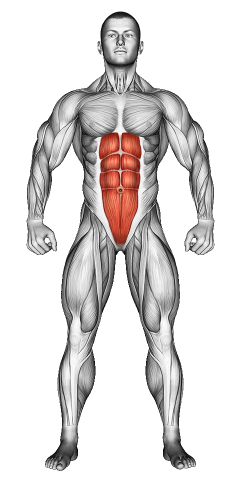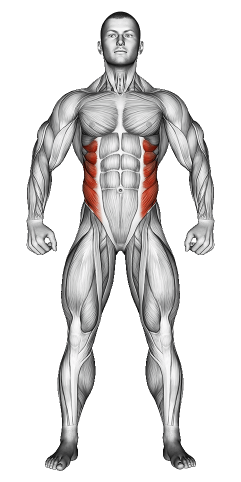Cable Standing Russian Twist: Video Tutorial & Exercise Guide

Written By: Claude Michael
Updated: Oct 13, 2024
| Workout | Cable Standing Russian Twist |
| Primary Muscle Group | Abs |
| Secondary Muscle Group | Obliques |
| Equipment Required | Cable |
| Force Type | Pull |
| Mechanics | Isolation |
| Exercise Type | Strength |
| Difficulty | Beginner |
Cable Standing Russian Twist: Video Tutorial & Exercise Guide
- 1.Cable Standing Russian Twist: Muscle Groups
- -1.1Primary Muscle Group
- -1.2Secondary Muscle Group
- 2.Cable Standing Russian Twist: Step-by-Step Guide
- 3.Cable Standing Russian Twist: Overview
- 4.Cable Standing Russian Twist: Benefits
- 5.Cable Standing Russian Twist: Pro Tips & Advanced Techniques
- 6.Cable Standing Russian Twist: Progression Plan
- 7.Cable Standing Russian Twist: Frequently Asked Questions (FAQs)
Secondary Muscles Group
Cable Standing Russian Twist: Step-by-Step Guide
- Step 1: Stand with your feet shoulder-width apart, facing perpendicular to a cable machine. Set the cable pulley at chest height and grab the handle with both hands, arms extended in front of you.
- Step 2: Engage your core, and keep a slight bend in your knees to maintain stability.
- Step 3: Rotate your torso away from the cable machine, keeping your arms straight. Focus on twisting from the core, not just moving your arms.
- Step 4: Return to the starting position in a controlled manner, resisting the pull of the cable.
- Step 5: Repeat the movement for the desired number of reps, then switch sides to work the other direction.
Cable Standing Russian Twist: Overview
The Cable Standing Russian Twist is an excellent exercise for targeting your obliques and overall core strength. By using the cable machine, you maintain constant tension throughout the movement, which enhances core engagement. This standing variation of the Russian twist is ideal for building rotational strength, improving balance, and enhancing functional fitness, especially for sports that require rotational power like golf or tennis.
Cable Standing Russian Twist: Benefits
This exercise strengthens the obliques and helps improve rotational stability, making it beneficial for athletes and anyone looking to enhance their core. The cable resistance also adds intensity, challenging the core muscles more than bodyweight twists. Additionally, it helps improve posture by strengthening the muscles around the spine.
Cable Standing Russian Twist: Pro Tips & Advanced Techniques
To get the most out of the Cable Standing Russian Twist, focus on rotating your torso and not your arms. Keep your arms extended and straight throughout the movement. For added challenge, increase the weight on the cable machine or slow down the twist to increase time under tension. Remember to keep your core tight and avoid using momentum to perform the twist.
Cable Standing Russian Twist: Progression Plan
Beginner
Intermediate
Advanced
Cable Standing Russian Twist: Frequently Asked Questions (FAQs)
What muscles do Cable Standing Russian Twists target?
+This exercise primarily targets the obliques, but also engages the entire core, including the rectus abdominis and lower back, for stability.
How can I increase the difficulty of the Cable Standing Russian Twist?
+You can increase the difficulty by raising the weight on the cable machine or slowing down the tempo to increase time under tension. Adding a pause at the end of each twist will also make it more challenging.
How often should I include this exercise in my routine?
+Incorporate this exercise 2-3 times per week as part of your core workout or functional strength routine to improve rotational power and core stability.
What common mistakes should I avoid during this exercise?
+Avoid using your arms to pull the cable—focus on twisting from your core. Also, keep your body stable and avoid excessive movement in your hips and shoulders to prevent injury.
Share
Don’t Wish for It, Work for It – Join the FlexXP Newsletter Today!
Thank you for signing up for the FlexXP Newsletter!
This site is protected and the Google Privacy Policy and Terms of Service apply.

